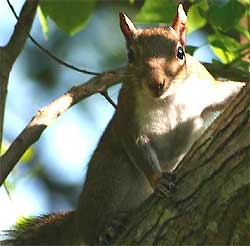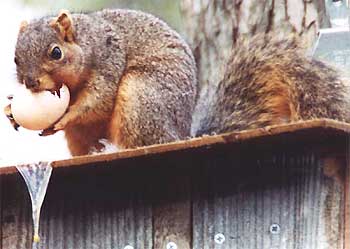Webkinz School
Tuesday, May 17, 2011
THE BEST EDUCATION - Intuitive Education Note
Intuitive Education Note:
THE best Education is an education in which the child or student does not even know they are learning.
THE best Education is an education in which the child or student does not even know they are learning.
Friday, May 6, 2011
Some Questions about Babies and Their Development
When do babies begin to feel pain?
When do babies start to THINK?
Feel pain? At the 24th- 26th week the nervous system is developed enough to move and can therefore FEEL Pain!
http://www.google.com/search?sourceid=chrome&ie=UTF-8&q=when+fetal+nervas+system+depelops
Brain waves first formally detected by modern science at 6 weeks:
http://www.google.com/search?sourceid=chrome&ie=UTF-8&q=when+fetal+nervas+system+depelops#hl=en&sugexp=gsqvhc&pq=when%20fetal%20nervas%20system%20depelops&xhr=t&q=when+fetal+brain+waves+develop&cp=30&qe=d2hlbiBmZXRhbCBicmFpbiB3YXZlcyBkZXZlbG9w&qesig=vCOK-P0bzAMPgGTWa0oCkg&pkc=AFgZ2tl2IfCBfzR03icFb0zTQbFRO3act92NL2FWh9dryVp1jrtlTP0EByAkIzdXewq4qZYYSX_wFRNZidfvWAfDmDUYMzCGsg&pf=p&sclient=psy&source=hp&aq=f&aqi=&aql=&oq=when+fetal+brain+waves+develop&pbx=1&bav=on.2,or.r_gc.r_pw.&fp=38664e7e8c090ddc
http://health.msn.com/pregnancy/slideshow.aspx?cp-documentid=100182842
http://health.msn.com/pregnancy/slideshow.aspx?cp-documentid=100182842&imageindex=2


When do babies start to THINK?
Feel pain? At the 24th- 26th week the nervous system is developed enough to move and can therefore FEEL Pain!
http://www.google.com/search?sourceid=chrome&ie=UTF-8&q=when+fetal+nervas+system+depelops
Brain waves first formally detected by modern science at 6 weeks:
http://www.google.com/search?sourceid=chrome&ie=UTF-8&q=when+fetal+nervas+system+depelops#hl=en&sugexp=gsqvhc&pq=when%20fetal%20nervas%20system%20depelops&xhr=t&q=when+fetal+brain+waves+develop&cp=30&qe=d2hlbiBmZXRhbCBicmFpbiB3YXZlcyBkZXZlbG9w&qesig=vCOK-P0bzAMPgGTWa0oCkg&pkc=AFgZ2tl2IfCBfzR03icFb0zTQbFRO3act92NL2FWh9dryVp1jrtlTP0EByAkIzdXewq4qZYYSX_wFRNZidfvWAfDmDUYMzCGsg&pf=p&sclient=psy&source=hp&aq=f&aqi=&aql=&oq=when+fetal+brain+waves+develop&pbx=1&bav=on.2,or.r_gc.r_pw.&fp=38664e7e8c090ddc
http://health.msn.com/pregnancy/slideshow.aspx?cp-documentid=100182842
Stages of Fetal Development
http://health.msn.com/pregnancy/slideshow.aspx?cp-documentid=100182842&imageindex=2

Month 1: Human development starts when a sperm fuses with an egg to create a zygote. A zygote is a single-cell that contains two copies of chromosomes—one copy from each parent. In the week following fertilization, the zygote undergoes rapid cell division and becomes a mass of cells known as a blastocyst. After more cell division, the blastocyst splits in half.
One half of the blastocyst will become the placenta and the other half will become the fetus. But just 12 days after fertilization, the cells destined to become the fetus turn into something else first: the embryo.
By the month’s end, this embryo is about the size of a grain of rice, and it looks more tadpole than human, donning a tail in lieu of legs. But already, its surface features and major organs—the heart, lungs, liver and kidneys—are starting to take shape.
Attention expectant moms: Exposure to high heat during early pregnancy may be risky business. Researchers at Boston University found that if expectant moms climbed into a hot tub or sauna or suffered a high fever during their first trimester of pregnancy, their baby faced an increased risk of developing neural tube defects (NTDs). Lounging in a hot tub is riskier than exposure to a sauna or fever, according to the study, which was published in the medical journal JAMA. The researchers also found that cuddling up with an electric blanket during the first few months of pregnancy posed no risk for NTDs.

Month 2: This month, the embryo’s development shifts into high gear. Its tongue, teeth and eyelids start to form. Its limbs grow longer and stronger, and its palate is nearly complete. Also in this time period, the embryo’s gastrointestinal tract separates from its urogenital organs and its heart begins beating—twice as fast as yours, in fact.
The essential organs all are under construction and major body parts are in place (legs, arms, head and torso). As the eighth week of pregnancy draws to a close, one more major development unfolds. The embryo gets a final name change, and it is now called a “fetus” until birth.
Attention expectant moms: The latest science news warns that you should think twice before taking pain pills. A study published September 2006 in the journal Birth Defects Research Part B found that pregnant moms who took non-steroidal anti-inflammatory drugs (NSAIDs) during their first trimester put their unborn child at risk for developing congenital birth defects—especially heart defects. Popular brands of NSAIDs include Motrin, Advil, Aleve and Celebrex, and the study’s authors are calling for more research to confirm their findings.
Month 3: This is the month of the heartbeat. Using a special tool called a Doppler monitor, doctors can detect the tiny thump-thumps of a 10-week-old fetus.
This is also a time of rapid growth inside the womb. By month’s end, the fetus will weight roughly 1 ounce, and it will double in length, uncurling from a tight C-position until it’s about 3 inches long. The tail will disappear and its eyelids, earlobes, limbs and digits will continue to form.
Other developmental milestones for this period include thumb-sucking, head-nodding and balling tiny fingers into fists. And though the fetus’s reproductive organs now are under construction, it’s still a bit early for the doctor’s gender declaration. That news (should you want it) usually arrives early in pregnancy’s second trimester.
Attention expectant moms: As many as seven out of 10 women suffer morning sickness during the first trimester, according to the Mayo Clinic. But new research conducted by two scientists from the University of Liverpool suggests that poor diet—and not raging hormones—may be the root of your upset stomachs. After reviewing nausea and diet data from pregnant women around the world, the scientists found that women who feasted regularly on sugars, alcohol, oils and meats were more likely to suffer symptoms of “morning sickness” relative to their cereal-munching cohorts. The theory here is that expectant mothers are hardwired to purge their body of hormone-heavy foods (like meats and dairy) in order to protect their vulnerable and growing fetus.
From the 16th to 20th week, the baby undergoes another rapid growth spurt. He begins to develop fat under a thin skin. The heart pumps a staggering 25 quarts of blood every day. Meconium, a baby’s waste product, accumulates in the bowel. The fetus regularly hiccups and spends the same amount of time awake and asleep as a typical newborn.
I wonder if the baby cries and caries on in the womb as it does when it comes out?
Monday, May 2, 2011
Squirrels!
Today, although being in bed most of the day with the flu, we studied... squirrels! The question was: "What do squirrels do for the earth?" aka "What do squirrels do for the ecosystem?" So that's what I typed into the search on google.
The best answer? They help to plant trees by burring seeds for the winter!
(As a secondary and bi-product of this study I think I finally managed to remember how to spell "squirrel"!)
http://www.backyardnature.net/squrrls.htm
The best answer? They help to plant trees by burring seeds for the winter!
(As a secondary and bi-product of this study I think I finally managed to remember how to spell "squirrel"!)
http://www.backyardnature.net/squrrls.htm
 Squirrels, such as the Eastern Gray Squirrel, Sciurus carolinensis, at the right, as well as chipmunks, are rodents, just like mice and rats. They all belong to the order Rodentia. A conspicuous feature uniting squirrels with rats and mice is their teeth. In the front of all rodent mouths, including those of squirrels, there are four chisel-like gnawing-teeth called incisors, two above and two below. Immediately behind the incisors there's a space, and then flattish back teeth appear. These back teeth, or "cheek" teeth, are adapted for grinding. The vast majority of rodents also have four toes on each front foot, and five on each hind foot. Squirrels, such as the Eastern Gray Squirrel, Sciurus carolinensis, at the right, as well as chipmunks, are rodents, just like mice and rats. They all belong to the order Rodentia. A conspicuous feature uniting squirrels with rats and mice is their teeth. In the front of all rodent mouths, including those of squirrels, there are four chisel-like gnawing-teeth called incisors, two above and two below. Immediately behind the incisors there's a space, and then flattish back teeth appear. These back teeth, or "cheek" teeth, are adapted for grinding. The vast majority of rodents also have four toes on each front foot, and five on each hind foot.TREE SQUIRRELSInside the rodent order, the Squirrel Family is a big one holding not only squirrels, but also chipmunks, ground squirrels, prairie dogs, woodchucks, and marmots. Often the squirrels inhabiting our backyard trees are called "tree squirrels," so as to not confuse them with ground squirrels and flying squirrels. Burt & Grossenheider's A Field Guide to the Mammals recognizes the following North American tree-squirrel species:
In the eastern U.S. and adjacent Canada the common "park squirrel" is the Eastern Gray Squirrel. In California, western Oregon, and west-central Washington, it's the Western Gray. Other squirrel species are more restricted to wild areas, though some of them have learned to beg from campers and picnickers in parks. The Golden-mantled Squirrel at the right, smaller than most squirrels and with stripes along its sides like a chipmunk, was photographed inside a large tent full of humans attending a camp meeting in California's Sierra Nevada Mountains. |
Wednesday, April 20, 2011
Water and Oil
While cleaning house today Cozette decided she wanted to see what would happen if she mixed up some water with some vegetable oil. She mixed it in some cold water and even after shaking it up all the oil pretty much went to the top.
Then she decided she wanted to see what would happen if she mixed some oil in with warm water; a lot of the oil mixed in.
Finally she got an clear plastic water bottle, filled it two thirds full with HOT water and added the oil. She shook it up just as the others. This time the oil mixed in with the water, turning it a yuck yellow.
She concluded that hot water and oil mix together pretty well, but not cold water.
Then she decided she wanted to see what would happen if she mixed some oil in with warm water; a lot of the oil mixed in.
Finally she got an clear plastic water bottle, filled it two thirds full with HOT water and added the oil. She shook it up just as the others. This time the oil mixed in with the water, turning it a yuck yellow.
She concluded that hot water and oil mix together pretty well, but not cold water.
Today we created a 30 page "homework" book for Cozette and the webkinz filled with Math problems, from simple addition to multiplications.
Cozette wanted to know why Ft. Lauderdale FL was so named:

Read more: http://wiki.answers.com/Q/What_rate_of_speed_is_necessary_to_break_the_sound_barrier#ixzz1K6YyDQzF
SO... In Conclusion: 287 metres per second is about 642.000716 miles per hour
Cozette wanted to know why Ft. Lauderdale FL was so named:
Fort Lauderdale is a city (incorporated place) located in Broward County, FL on the east coast of Florida. The City got it's name from Major William Lauderdale who built the first fort at the rivers mouth in 1838 during the Seminole Indian wars. Fort Lauderdale was incorporated in 1911 with only 175 residents.
Population: 152,397 (US Census 2000).
Population: 152,397 (US Census 2000).
Cozette Asked: "How Fast does sound travel":
To break the sound barrier you have to travel than the speed of sound.
The speed of sound in air actually varies with temperature. When representing air as an ideal gas the speed of sound can be represented as
c = square root(γRT)
where
γ = specific heat ratio = 1.4
R = specific gas constant = 287
T = Temperature in Kelvin.
Using this equation the speed of sound in dry air at:
-100 degrees Celsius is 264 metres per second
0 degrees Celsius is 343 metres per second
100 degrees Celsius is 287 metres per second.
The speed of sound in air actually varies with temperature. When representing air as an ideal gas the speed of sound can be represented as
c = square root(γRT)
where
γ = specific heat ratio = 1.4
R = specific gas constant = 287
T = Temperature in Kelvin.
Using this equation the speed of sound in dry air at:
-100 degrees Celsius is 264 metres per second
0 degrees Celsius is 343 metres per second
100 degrees Celsius is 287 metres per second.
Read more: http://wiki.answers.com/Q/What_rate_of_speed_is_necessary_to_break_the_sound_barrier#ixzz1K6YyDQzF
SO... In Conclusion: 287 metres per second is about 642.000716 miles per hour
Introduction
We are the "Elinas" This Blog is for Elina Cozette and Elina Rebecca to Journal the things we study and teach in "Webkinz School".
"Webkinz School" is where we teach our little furry friends about the world around them. Our class sizes vary, and traditionally "Miss Bird" (Rebecca's Bluefadoodle) is the "Teacher". But occasionally we have a substitute teacher. "Stripes" the Tiger is a fairly regular sub in our class room, but others may be noted from time to time.
Although Rebecca (aka. Momma) generally plays the roll of "Teacher" Cozette often takes her turn in this capacity as well.
Hope you all enjoy following us in "Webkinz School"!!!
"Webkinz School" is where we teach our little furry friends about the world around them. Our class sizes vary, and traditionally "Miss Bird" (Rebecca's Bluefadoodle) is the "Teacher". But occasionally we have a substitute teacher. "Stripes" the Tiger is a fairly regular sub in our class room, but others may be noted from time to time.
Although Rebecca (aka. Momma) generally plays the roll of "Teacher" Cozette often takes her turn in this capacity as well.
Hope you all enjoy following us in "Webkinz School"!!!
Subscribe to:
Posts (Atom)


 Especially with a pair of binoculars you can see plenty of tree-squirrel behavior -- such as shown at the right, where an Eastern Fox Squirrel is eating a Wood Duck's egg. You might also see them building two kinds of tree-nests. Courtship between males and females is very complex and dramatic, and so is the conflict among males to establish who's top squirrel in the neighborhood. When young emerge, you can watch them foraging with their mother, learning how to eat various foods, and getting into all kinds of mischief. Once you gain a little practice watching them, following them, figuring out what they're doing, and making good notes, you'll be surprised at how much of this wild animal's life cycle you can chronicle!
Especially with a pair of binoculars you can see plenty of tree-squirrel behavior -- such as shown at the right, where an Eastern Fox Squirrel is eating a Wood Duck's egg. You might also see them building two kinds of tree-nests. Courtship between males and females is very complex and dramatic, and so is the conflict among males to establish who's top squirrel in the neighborhood. When young emerge, you can watch them foraging with their mother, learning how to eat various foods, and getting into all kinds of mischief. Once you gain a little practice watching them, following them, figuring out what they're doing, and making good notes, you'll be surprised at how much of this wild animal's life cycle you can chronicle!